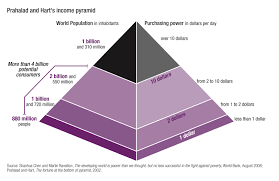
Marketers do not decide a brand’s ultimate meaning, consumers do
Order Instructions:
The essay topic is as follows:
“While marketers do their best to imbue brands with positive, motivating values and associations,
marketers do not decide a brand’s ultimate meaning. Consumers do – and sometimes they find
relevance, purpose and significance that the brand’s creators may not have seen or intended.
DISCUSS”. – Dorothy Fitch, global analyst, Millward Brown
This is an essay based on scholarly journal article research, theory and critical evaluation/synthesis (not
mere description). You must support your answer with a minimum of 8 journal articles (can be peer
reviewed or otherwise but must be from sources classified as Journals). The essays upper word limit is
2,500 words. There is no minimum word limit. The upper word limit is strict. NB. The word limit does not include; title page/cover page, sub-headings, reference list (it does include in-text citations), appendix.
Notes:
• A minimum of 6 journal articles. Penalty of 20/100 marks applied if this criteria is not met.
• Full Harvard author-date referencing is required (in-text citations, and reference list).
SAMPLE ANSWER
- P Morgan once stated that understanding a client inside out is essential in meeting and anticipating their various needs, finding solution to their problems and making them aware of opportunities that they would otherwise not have found on their own (As cited in. Simpson, & Licata 2007, 311). This statement is the reason why there is increased strategic marketing and product branding among organizations and business entities to maximize profitability (Simpson, & Licata 2007, 315). Focus among organizations, therefore, is in coming up with marketing and branding strategies that will appeal to consumers and lead to increased purchases, which will in turn lead to higher profit margin. To achieve this, marketers are left with the daunting task of coming up not only with the best marketing strategy, but also with unique brands that motivate and bear positive values to the consumers (Hudders, Pandelaere, & Vyncke 2013, 394). The challenge with such marketing and branding strategies, however, is that consumers and their spending habits are the most difficult things to understand. Consumer behavior is motivated by several psychological, environmental, and situational factors (Antonetti & Maklan 2013, 117), that assuming their response to a particular brand of product would not only be irrational, but a serious marketing blunder. Other factors such as self-concept, consumer attitude and social influences also play a vital role in positioning the consumer to have the ultimate say in a brand’s image, effectiveness, satisfaction and eventual success (Ward & Dhan 2014, 591). Marketers should, therefore, focus on marketing, and leave consumers to decide on the actual meaning of the brand and establish positive brand associations by themselves (Halt 2002, 71). This is because consumers may derive benefits, and even attach value to a particular brand that marketers had not even intended. With consumers being the final decision makers with regard to brand identity and viability, this paper shall critically analyze marketing and branding strategies and concepts organizations use to lure customers, theories about consumer perception and brand association, in order to prove that marketers have little, if any, role to play in determining how consumers perceive, value, associate with, and use a particular brand, because consumers are in control of the use and identity and significance of a product, as posited by Dorothy Fitch.
To influence consumers’ product consumption and increase profitability, most organizations resort to marketing and branding. Marketing refers to the process of satisfying the demands of customers by identifying what they need, anticipating what they require and satisfying such requirements (Hanssens, Rust, & Srivastava 2009, 115). This, therefore, puts the task of strategic marketing to marketers, since they play the important role of ensuring sustainability in organizations, customer satisfaction and putting organizations in a competitive edge in comparison to its competitors (McCausland 2009, 101). Marketers play several strategic roles in sustaining customer satisfaction and ensuring profitability through increased sales. First, marketers perform market research and evaluate trends in marketing, dynamics involved in consumer needs, consumption attitudes and market efficiencies so as to guarantee competitiveness (Franke, Keinz, & Steger 2009, 111). Second, they play a key role in designing of products, research on efficient production methods and labeling. They also initiate strategic paths that their organization should follow so as to improve the organizations brand in terms of value, its perception among consumers and positive brand association. In their strategic marketing role, marketers should always be aware of the fact that consumers are varied with different motivations, social status, personalities and other unique consumer behaviors that affect consumption (McCausland 2009, 103). While marketer play a key role in ensuring that products penetrate the market and reach the market they have targeted, they have little control on the level of significance that that brands of products they are marketing bear on the target consumers (Naghiu 2011, 129).
Consumers sometimes make their consumption decision based on their knowledge about a particular brand and their expectation about a particular brand are varied (Juscius, & Sneideriene 2013, 794). Branding, a process that rests in the hands of marketers, refers to developing products to possess attributes that appeal to human nature, so as to make them unique, appealing, and valuable to consumers (Juscius, & Sneideriene 2013, 794). Branding aims at building brand equity, and creating features in product so that consumers feel emotionally attached to the brand. There are two branding strategies that marketers use to brand their products, and these include manufacturers branding and branding through a private label. Branding has several functions and roles such as providing a means by which organizations communicate with their customers, through customizing of organizations product to match consumer expectations (Hanssens, Rust, & Srivastava 2009, 118). It builds credibility of an organization’s products and services with time since credibility takes time to build, and branding also provides the connection between the product and the consumer by generating customer loyalty. Branding also tries to provide the motivation that consumers need in order to consume a particular product. The challenge for marketers here, is that various consumers are motivated by various needs, some of them psychological (Naghiu 2011, 128). The major reason for branding is to create products that can lure consumers simply because of the intangible attributes they possess including status, quality, quality and convenience. These features that are associated with the product are non-physical, and are influenced by strategic decisions that marketers take such as price and product. Marketers therefore can influence few elements of a product’s brand, but cannot influence the consumers’ attitude, perception, and level significance that the brand bears on them (Juscius, & Sneideriene 2013, 797). This is where marketers’ role stop and consumers control over the impact of a brand begins since they are the ones who ultimately decide whether to buy a product or otherwise (Whan, MacInnis, Priester, Eisingerich, & Iacobucci 2010, 9). Success therefore depends purely on the consumers since while marketers may have considered all the possible factor to make a brand easily identifiable by consumers, chance of misinterpreting the customers need are certain because consumers can be irrational spenders, motivated by various factors ( Zaichkowsky 2001, 51). Marketers therefore should know that their efforts in establishing brand association and relationship among consumers they have targeted may yield little fruits, if any, since consumer behavior is driven by several physiological and psychological factors.
Since consumers are instrumental in determining the success of product branding, it is important to look at consumer behavior, in particular how they make their decisions, their brand perception variations and what really motivates them to behave the way they do. Various factors have been documented that try to gain an understanding of consumer behavior patterns and decision making. These factors include situational factors such as the location where the organization’s stores are located, influences consumers decision to purchase a product since if they perceive the location to be located in inconvenient or not so easy to reach places, they may be reluctant to travel all the way just to buy the product in question. They may opt for a substitute even if it is of lower brand quality simply because it is accessible. The layout of the physical factors that are in the organization’s control also influence consumption decisions because consumers tend to be lure by attractive physical structures (Whan, MacInnis, Priester, Eisingerich, & Iacobucci 2010, 7). There are also certain physical factors that are beyond the control of organizations but affect the consumption patterns of a consumers. For example, very few individuals will be willing to buy a product in rainy seasons, companies that deal with umbrellas for instance only get market during rain seasons while the same rainy season means bad news for those running beach rests and hotels. Personality and self-concept also have a bearing on consumer consumption, with little effect of marketing strategies intervention and branding. Different consumers have different personality types that have greater bearing on their consumption patterns that marketers may not be aware of (Naghiu 2011, 131). We have consumers who traits such as extraversion, agreeableness, open, neuroticism and conscientiousness. All these presents a concept about the self and greatly affect consumers purchasing behavior, in a manner that marketer cannot. For consumers who have whose personality trait is openness, for instance, are likely to respond to organizations claims about the benefits of a particular brand more positively than consumers who are, say, neurotic. Again research show that consumers with extravert personality trait are more likely to easily spend their money on a particular brand more readily. Perception theories have also attempted to explain the various points of views that different consumers hold about a singular brand of product (Franke, Keinz, & Steger 2009, 114). Consumer perception with regard to consumer behavior refers to consumer perceive or look at things using their five senses. Perception theories try to find the reasons behind consumers’ opinions about their products or organization. The perception theories are vital to marketers because it enables them to come up with brands that are likely to appeal to the consumers, so that they may retain the current customers, and possibly lure more, through designing product features that are likely to appeal to the target consumers. Self-perception, which is how consumers view and think about themselves, and focuses in particular, on customers values, needs, expectations, and motivations that influence their buying patterns or behaviors (McCausland 2009, 105). For example, a consumer may buy a particular brand of product not because of its popularity or quality as marketers may have intended, but they may buy if simply because his friend buy the same product, or may not buy it because some people have bought it.
Psychological needs cannot be ignored where consumer behavior is involved. From a physiological point of view, consumer have various needs such as physiological needs that include hunger and thirst, the need for safety and security, the need for personal esteem, the need to attain self-actualization and the need for belongingness. Consumers can thus prefer a particular brand of product because he associates the product with being safe, or perceives the product to be capable of fulfilling his needs. The need to belong is especially influential especially among the young consumers, because they tend to be influenced easily by peers (Juscius, & Sneideriene 2013, 799). These are called reference groups and much of consumer consumption behavior is influenced by such reference groups because consumers tend to influence each other. This therefore implies that marketing strategies have little impact in determining or giving meaning to brands, especially where such reference groups are powerful.
These perception variations and motivations influence consumers’ behaviors. Marketers, as key players in designing brands of products, usually consider these psychological needs, safety needs, social needs and self-actualization needs (Franke, Keinz, & Steger 2009, 117). These needs have to be satisfied and they are the reason behind the irrational consumption patterns of consumers. This irrational consumption is the reason why even strategic marketers may not be accurate in coming up with brands that are certain to appeal to consumers. If a brand appeals to consumers as a result of a marketer’s input, it is usually more out of chance than design. It is argued that in the marketing arena, the only common thing is the constant change in consumer tastes and references. It is in this regard that marketers tend to carry out extensive market research to try to establish the trending needs and market preferences. What is more, while consumers are the ultimate determinants of the suitability and quality of a product, they initially do not always know what they want until it is developed. This presents a difficult puzzled to producers, who have to fight to satisfy superficial needs (Naghiu 2011, 134). Dorothy’s statement is true in its very nature, since marketers may develop a product based on facts gathered from a series of market research, but end up producing the wrong thing. Could it be argued that the qualification of a new product in the market is purely a subject of chance? The answer to this question begs for a deeper and more comprehensive understanding of the dynamics of consumer behavior.
In conclusion, marketers play a very vital role in branding of products and influencing consumers’ purchasing habit through focusing research on the motivations behind consumers’ consumptions, motivational factors behind such consumptions and the needs that consumers usually try to fulfill that drive their consumption patterns. This has tremendous effect on the organizations profits and sales volumes. However, when it comes to consumers developing brand identity and brand associations, the forces in play are purely from the end of the consumers. Consumer needs are hard to understand, and so despite extensive research, it would be difficult to gain a comprehensive understanding as to what make consumers adopt somewhat irrational buying patterns in existence. It is, therefore, safe to assume that when it comes to brand association, brand identity, brand design, and benefits derived from particular brands, the consumers have greater determining power because no marketer or marketing and branding strategy can fully satisfy the spontaneous, changing irrational needs of consumers. This statement only means that consumers are usually the kings of every product developed and marketed by an organizations, and it is imperative that producers develop products with the consumer in mind, since they are the final determinants of brand identity and ultimate quality.
References
Franke, N, Keinz, P, & Steger, C 2009, ‘Testing the Value of Customization: When Do Customers Really Prefer Products Tailored to Their Preferences?’, Journal Of Marketing, 73, 5, pp. 103-121.
Hanssens, D, Rust, R, & Srivastava, R 2009, ‘Marketing Strategy and Wall Street: Nailing Down Marketing’s Impact’, Journal Of Marketing, 73, 6, pp. 115-118.
Hudders, L, Pandelaere, M, & Vyncke, P 2013, ‘Consumer meaning making’, International Journal Of Market Research, 55, 3, pp. 391-412.
Juscius, V, & Sneideriene, A 2013, ‘The research of social values influence on consumption decision making in Lithuania’, Economics & Management, 18, 4, pp. 793-801.
McCausland, WJ 2009, ‘Random Consumer Demand’, Economica, 76, 301, pp. 89-107.
Naghiu, M 2011, ‘The psychological implications behind the marketing strategies that aim to predetermine costumer’s behavior’, Review Of Management & Economic Engineering, 10, 2, pp. 127-135.
Simpson, P, & Licata, J 2007, ‘Consumer attitudes toward marketing strategies over the adult life span’, Journal Of Marketing Management, 23, 3/4, pp. 305-326.
Ward, M, & Dahl, D 2014, ‘Should the Devil Sell Prada? Retail Rejection Increases Aspiring Consumers’ Desire for the Brand’, Journal Of Consumer Research, 41, 3, pp. 590-609.
Whan Park, C, MacInnis, D, Priester, J, Eisingerich, A, & Iacobucci, D 2010, ‘Brand Attachment and Brand Attitude Strength: Conceptual and Empirical Differentiation of Two Critical Brand Equity Drivers’, Journal Of Marketing, 74, http://www2.owen.vanderbilt.edu/dawn.iacobucci/articles/JM2010-brands-w-CW-Joe.pdf
We can write this or a similar paper for you! Simply fill the order form!












